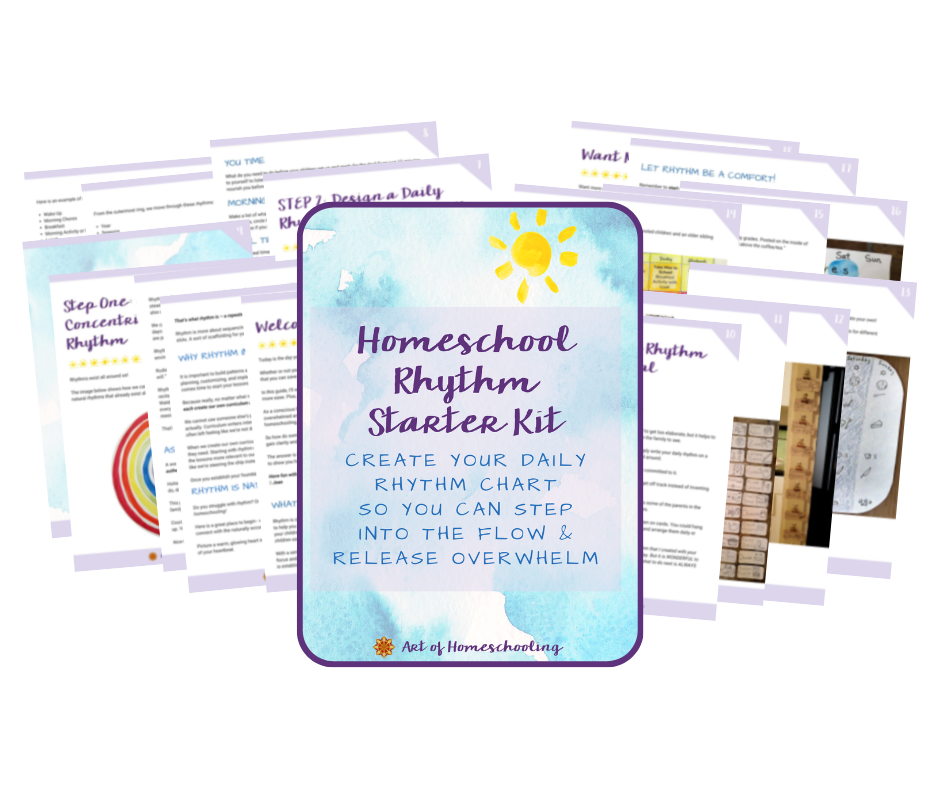Honestly, I’m not even sure there is such a thing as finding balance as a homeschooling Mom! Let me just say that balance can be elusive for sure. But in my 28 years of parenting and homeschooling, striving for balance is worth every bit of energy that you give it. AND, you will find that sense of balance to be fleeting and only momentary. Change is inevitable, so we need to stay flexible. Here are my best tips for how to find balance as a homeschooling Mom.
Starting with the very basics, we all only have 24 hours in a day. And my observation over the past almost three decades is that we all try to do way too much. In order to find balance, we may need to let go of some activities, beliefs, and perfectionism that keep us weighted down.
Here is my list of how to find balance as a Waldorf homeschooling Mom, starting with the most important items first.

How to Find Balance as a Homeschooling Mom
- Take Care of Yourself First
I know that this can seem impossible. But it’s really true. We have to put our own masks on first.
That means prioritizing these four things: sleep, nutritious food, movement, and quiet time for meditation, prayer, or affirmations.
Before you do anything else, aim for weaving these four things into your day for YOU the majority of the time. I like to aim for 80% of the time, but that’s not always the reality!
Need help taking care of yourself? Check out these posts:
Tools for Self-Care for Homeschooling Mamas
7 Powerful Mantras for Waldorf Homeschooling Mamas
2. Plan for Homeschooling in Small Chunks
So often, we long for an elaborate homeschooling plan that is comprehensive. I know I did. But the truth is that starting with the basics and building from there is far more successful in the long run.
Where do with start? In Waldorf homeschooling, we start with the stories. For young children in early childhood, we can stick with the same story for a week or two and build activities, songs, and verses around the story.
For children in the grades, we want to bring the lessons through story. So, the very basics include the story material, a few songs and verses, and an artistic activity to go with the story to help children integrate the learning.
Once we have the basics down and it’s been going smoothly for a few weeks, we can begin to layer in other elements of the curriculum such as handwork and drama.
If you want help creating the scaffolding for your plan – like the monthly, weekly, and daily rhythms – join me in my online coaching group, Plan It Out.
3. Simplify Household Tasks
Easier said than done, I know. But we seriously need to simplify.
Cut back on outside activities to reduce getting everyone out the door and the driving. Create a super simple plan for meals – like soup & salad on Sundays, meatless Mondays, taco Tuesdays etc. The online meal planning tool, Plan to Eat, can really help with that. (That’s my referral link.) And either do all the laundry in one day, with lots of help. Or do a load a day by starting it the night before and having times set for switching the load, folding, and putting away.
As your children get older, ask them to help with chores. This helps you to create daily rhythm as well!
Happy Mother’s Day to you! If you’re in the United States, Mother’s Day is just around the corner.
But in my book, every day is Mother’s Day! You might want to print out my Mother’s Day Manifesto to hang on your wall.
Sending you big hugs from one Mama to another.



This is rich; your skills are other-worldly. My personal medicine is where you wrote about prioritizing sleep, nutritious food, movement, and the dwell-in-the-mystery part. Thank you Jean.
Thank you, Theresa! That dwell-in-the-mystery part can be so challenging to stick with but oh so powerful. 🙂